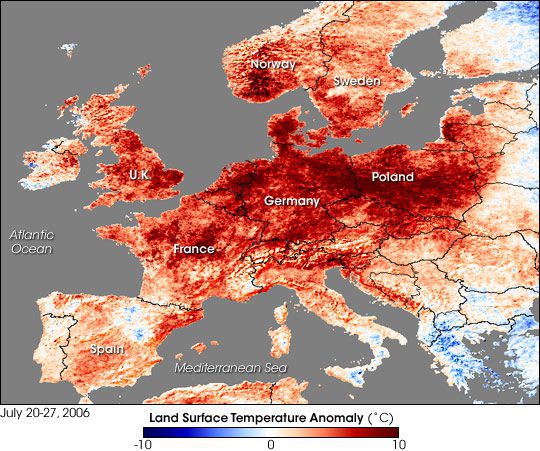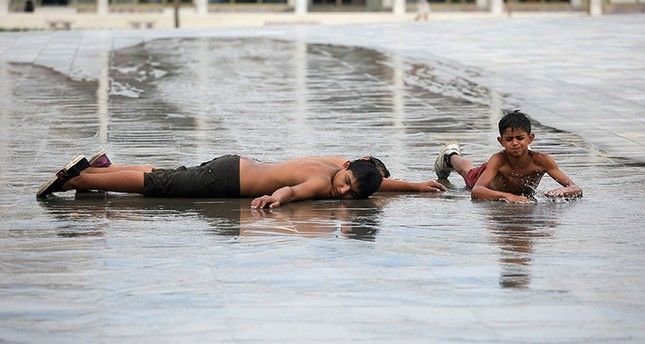New Study Reveals Countries Most Vulnerable to Upcoming Severe Heat Waves

As global warming intensifies, countries must prepare for extreme heat waves. Study reveals which nations are most at risk and the need for action.
Global warming has resulted in an increase in global temperatures, which is causing more frequent and severe heat waves across the world.
According to a recent study by researchers from across the UK, the countries most at risk from the harmful effects of heat waves have been identified.
The research takes into account not only countries where heat waves are expected to be more frequent, but also factors such as socioeconomics, population growth, the stability of energy networks, and the availability of healthcare services.
The study concludes that regions such as Afghanistan, Papua New Guinea, and Central America are among the most at risk from the damaging effects of heat waves.
Beijing and Central Europe are also vulnerable, with their large populations putting a relatively large number of people at risk. The research team wants to see more done to prepare for the potentially devastating heat waves that lie ahead.

Part of the challenge is that we are not certain about what to expect in the future. The heat waves we have experienced up until this point are likely to be less severe than what we will face in the future.
As the researchers explain in their published paper, “Policymakers and governments need to prepare for events beyond current records – particularly with trends caused by anthropogenic climate change enhancing the probability of extremes.”
The researchers used the latest climate models and global population data to make their assessments, as well as a method for determining the chances of extreme climate events repeating known as extreme value statistics.
According to the researchers, statistically implausible heat waves – extreme enough not to be predicted by models – have happened in 31% of the 136 regions covered by the study over the last 60 years.
High temperatures can kill people directly, and they can also make daily life and work much more difficult. Additionally, extreme heat can have a devastating impact on agriculture and farming development, as well as knock-on effects such as an increased risk of wildfires.
While the developing countries are the least likely to have comprehensive heat plans in place, it also offers some good news. The researchers found that putting preparations in place can significantly reduce the number of deaths resulting from heat waves.
Cooling urban environments and implementing a shift or reduction in working hours are just a few examples of potential solutions that could be effective in reducing the risk of heat wave harm.

Despite the potential for solutions, the study highlights the need for governments and policymakers around the world to take action to address the harmful effects of heat waves.
Atmospheric scientist Dann Mitchell from the University of Bristol notes that “We have seen some of the most unexpected heat waves around the world lead to heat-related deaths in the tens of thousands.
In this study, we show that such record-smashing events could occur anywhere. Governments around the world need to be prepared.“
Moreover, the study also emphasizes that developing nations are especially vulnerable to the harmful effects of heat waves, but they are also the least likely to have comprehensive heat plans in place.
Therefore, while efforts to curb global warming continue, it is essential to take steps to limit the harm of extreme weather events that are now heading our way.

One of the key takeaways from the study is that regions that have been “lucky” so far, such as those with rapidly growing populations, developing nations, and those that are already very hot, need to be better prepared.
This includes taking into account factors such as the availability of healthcare services, stability of energy networks, and socioeconomics.
In conclusion, the study reveals the urgent need for governments and policymakers around the world to take proactive steps to address the harmful effects of heat waves.
While the researchers’ findings may seem alarming, they also highlight the potential for solutions that can significantly reduce the risk of heat wave harm.
Ultimately, it is up to governments and policymakers to prioritize and invest in these solutions to help protect vulnerable populations and prevent unnecessary loss of life.
The research has been published in Nature Communications.
Via Science Alert.



